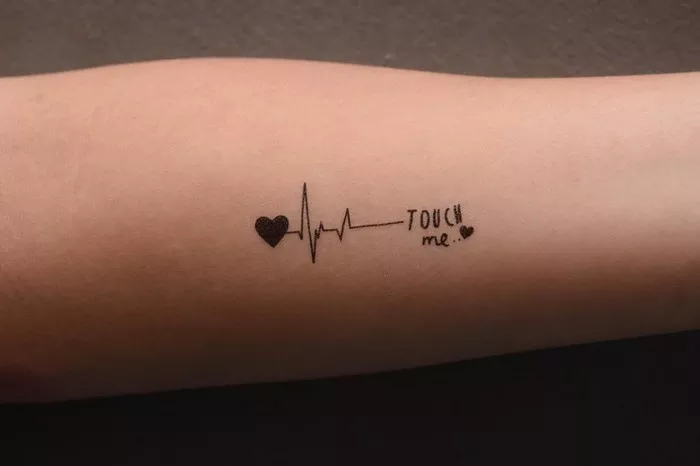Tattoos have become a mainstream form of self-expression, with millions of people worldwide adorning their bodies with intricate designs, meaningful symbols, and artistic masterpieces. However, for many individuals contemplating their first tattoo, one burning question often lingers: How much does getting a tattoo hurt? The perception of pain associated with tattooing varies widely among individuals, influenced by factors ranging from personal pain tolerance to the location and size of the tattoo. In this comprehensive guide, we will delve into the intricacies of tattoo pain, exploring its subjective nature, factors affecting pain perception, strategies for managing discomfort, and tips for ensuring a more comfortable tattooing experience.
Tattoo Pain: A Subjective Experience
Pain perception is highly subjective, varying from person to person based on a multitude of factors. When it comes to tattoos, the experience of pain can differ significantly depending on an individual’s unique physiology, psychological state, and previous experiences with pain. While some may describe the sensation as mildly uncomfortable or akin to a repetitive scratching or burning sensation, others may find it excruciatingly painful.
Factors Affecting Pain Perception
Several factors contribute to the perception of pain during the tattooing process. Understanding these variables can help individuals better prepare for their tattoo experience and manage discomfort more effectively:
Location of the Tattoo: Certain areas of the body are more sensitive to pain due to differences in skin thickness, nerve endings, and proximity to bones and major organs. Generally, tattoos on bony areas such as the ribs, spine, and ankles tend to be more painful, while fleshy areas like the upper arm or thigh may be less intense.
Size and Complexity of the Design: Larger and more intricate designs typically require longer sessions, increasing the duration of exposure to the tattooing process and potentially intensifying discomfort.
Individual Pain Tolerance: Pain tolerance varies widely among individuals and is influenced by genetics, previous experiences with pain, mental state, and emotional resilience. What may be unbearable for one person could be relatively tolerable for another.
Artist Skill and Technique: The skill and technique of the tattoo artist also play a significant role in the level of discomfort experienced during the tattooing process. Experienced artists with a gentle touch and precise technique can minimize pain and discomfort for their clients.
Numbing Agents and Pain Management Techniques: Some tattoo studios offer numbing creams or sprays to help alleviate pain during the tattooing process. Additionally, various pain management techniques such as deep breathing, distraction, and mindfulness can be employed to reduce discomfort.
Strategies for Managing Tattoo Pain
While getting a tattoo inevitably involves some level of discomfort, there are several strategies individuals can employ to help manage pain and make the experience more bearable:
Choose the Right Placement: Opting for a less sensitive area of the body for your first tattoo can help minimize pain. Discuss placement options with your tattoo artist to find the most suitable location based on your pain tolerance and desired design.
Stay Hydrated and Well-Rested: Ensuring that you are adequately hydrated and well-rested before your tattoo appointment can help reduce sensitivity to pain and promote overall comfort during the tattooing process.
Communicate with Your Tattoo Artist: Open communication with your tattoo artist is crucial. Be honest about your pain tolerance and concerns, and don’t hesitate to ask for breaks or adjustments to help manage discomfort during the tattooing process.
Practice Deep Breathing and Relaxation Techniques: Deep breathing exercises and relaxation techniques can help calm your nerves and distract from the sensation of pain during the tattooing process. Focus on slow, steady breathing and visualize yourself in a peaceful, relaxing environment.
Consider Numbing Options: If you anticipate significant pain or have a low pain tolerance, discuss the possibility of using numbing creams or sprays with your tattoo artist. These topical anesthetics can help temporarily numb the skin and reduce discomfort during the tattooing process.
Take Breaks as Needed: It’s essential to listen to your body during the tattooing process. If you’re feeling overwhelmed by pain or discomfort, don’t hesitate to ask for a break to rest and regroup before continuing.
Tips for Ensuring a More Comfortable Tattooing Experience
In addition to the strategies mentioned above, here are some additional tips to help ensure a more comfortable tattooing experience:
Choose a Reputable Tattoo Studio: Research and choose a reputable tattoo studio with experienced artists who prioritize client comfort and safety. Read reviews, ask for recommendations, and visit the studio in person to assess cleanliness and professionalism.
Prepare Mentally and Emotionally: Getting a tattoo can be a significant emotional experience for some individuals. Take the time to mentally prepare yourself for the process, and focus on the excitement of expressing yourself through body art rather than fixating on potential discomfort.
Distract Yourself During the Tattooing Process: Bringing along a distraction such as music, podcasts, or a friend to chat with can help take your mind off the sensation of pain during the tattooing process.
Follow Aftercare Instructions: Proper aftercare is essential for ensuring that your tattoo heals quickly and without complications. Follow your tattoo artist’s aftercare instructions carefully to minimize discomfort during the healing process.
Stay Calm and Relax: While it’s natural to feel nervous before getting a tattoo, try to stay as calm and relaxed as possible. Remember that millions of people have successfully gotten tattoos before you, and focus on the end result – a beautiful piece of art that you’ll cherish for years to come.
Conclusion
While getting a tattoo inevitably involves some level of pain and discomfort, the intensity of the experience varies widely among individuals. By understanding the factors that influence pain perception, employing effective pain management strategies, and choosing a reputable tattoo artist and studio, you can help ensure a more comfortable and enjoyable tattooing experience. Remember that the pain of getting a tattoo is temporary, but the beauty of the artwork you’ll carry with you is enduring.


